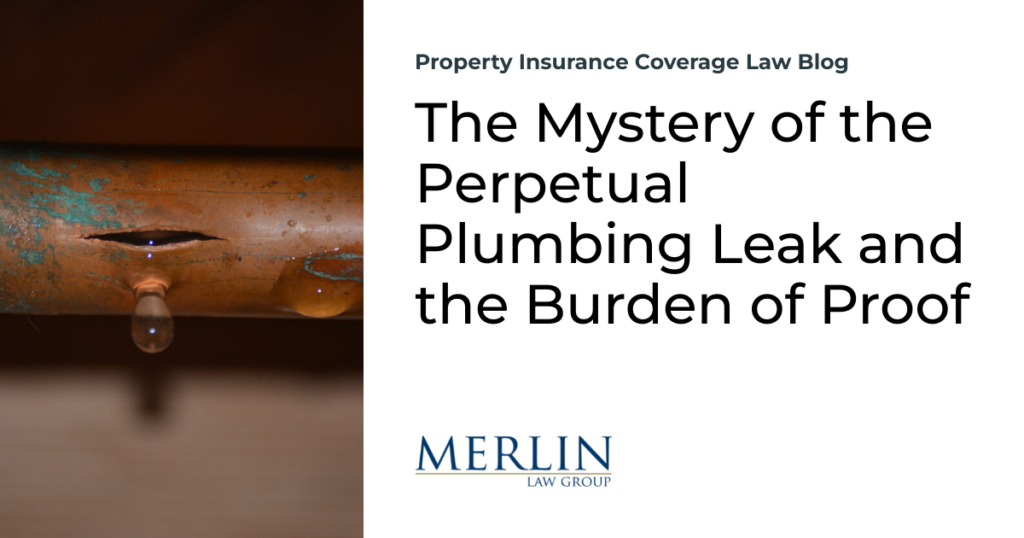The Mystery of the Perpetual Plumbing Leak and the Burden of Proof

Drip Drop, Drip Drop. Plumbing and pipe leaks are one of life’s nuisances, but what happens when it cannot be determined how long a leak was active?
In a Florida case, Deshazior v. Safepoint Insurance Company,1 the insureds discovered a leak and hired a restoration company to mitigate any further damage. The homeowners notified their insurer, and the insurer then sent out two claims adjusters and a professional engineer to evaluate the damaged property.2 The insureds had already discarded the damaged portions of the pipes, wall, and baseboards.3
The insurer’s inspector and forensic engineer concluded that the property damage appeared to have been caused by long-term seepage and exposure to water, coupled with failure to maintain the plumbing in and around the bathroom where the claimed leak occurred. Safepoint then denied the claim based on a slow leak/seepage exclusion in the insurance policy.4
The insureds argued here that summary judgment should not have been entered in favor of Safepoint in this matter based on the “constant or repeated seepage” exclusion provision in their policy because there were differing expert opinions presented as to whether the duration of the leak was sudden or long-term.5
The insureds’ expert witness testified during a deposition that he could not make any determination as to how long the leak had been active and also admitted in his deposition he was not an expert in the evaluation of leak durations.6
Meanwhile, Safepoint had submitted evidence that the damage likely occurred by slow leakage or seepage of water over a period of weeks or months.7
In Florida, Since Safepoint submitted that evidence, the burden had then shifted to the insureds to introduce sufficient evidence to overcome summary judgment and show that the damage was instead caused by a one-time accidental release of water.8
The court held that because the insureds were unable to introduce evidence to meet their own burden, the loss was not covered when the duration of time the leak had been active could not be determined.9
1 Deshazior v. Safepoint Ins. Co., 305 So.3d 752, 753 (Fla. Dist. Ct. App. 2020).
2 Id.
3 Id.
4 Id. at 753-754.
5 Id. at 754.
6 Id.
7 Id. at 755.
8 Id.
9 Id. at 754-755.







